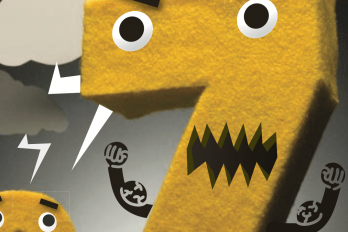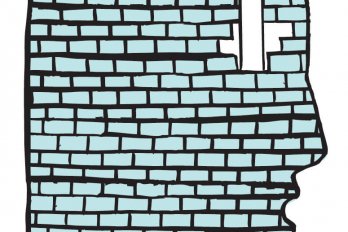
The florida keys — “I hate trailers. They’re absolute junk.” Bill Loewy’s compact sedan crawls at senior citizen speed along the Overseas Highway, half an hour northeast of Key West. “But don’t take away the cardboard box a guy’s living in until you can replace it.” To our left, the Gulf of Mexico; to our right, the Straits of Florida. On the islands between bridges, we pass tiki bars, a strip mall, streets leading to multimillion-dollar homes — and mobile home parks. These tapestries of outdoor fish freezers, “Art Slut” bumper stickers, and fat men in American flag T-shirts walking white poodles are an endangered species, caught in a real estate undertow.
Loewy, a bald, stocky seventy-nine-year-old ex-Marine and the founding director of the local chapter of Habitat for Humanity, is driving me to the Seahorse RV Park on Big Pine Key, where about 100 residents have dug in against the siege. Florida’s stormy, ecologically fragile end-of-the-road archipelago is reaching capacity, so the local county requires anyone building a new house or condo unit in the Keys to buy and bulldoze an existing home, or endure an application process that can take years. The three dozen remaining trailer parks are therefore prime targets for redevelopment. Seahorse tenants have faced the prospect of eviction since a condominium builder purchased the property nearly two years ago, and their story is common. Thousands of working-class locals stand to lose their homes: 15 percent of all housing units in the Keys are trailers.
We pass Big Pine’s mangrove swamps and tropical hardwood forests, pulling onto the shoulder every few minutes so Loewy can concentrate on his running commentary. Basic one-bedroom apartments in the Keys rent for $1,300 (US). Detached homes start at $400,000. Because housing costs are so high, some retail staff bus in from the mainland, a six-hour round trip. Those workers who actually live in the Keys — from teachers, electricians, and sheriffs’ deputies to single-mom waitresses and the immigrants who keep the tourism sector afloat — often save up and buy trailers.
There’s little trailer trash stigma here. In fact, Florida’s Mobile Home Act gives trailer owners some of the same protections as it does other homeowners. But landholders’ rights are paramount, and as the unhinged economics of resort living encourage an increasing number to sell or redevelop their trailer parks, the homes that populate them are plummeting in value. (Most are decades old and no longer roadworthy, except for the haul to the dump.) And so an unfamiliar air of transience has descended on the parks.
More acutely, every park closure aggravates the labour shortage in an already depopulating county. “When I had an appendectomy recently,” Loewy says, chewing on a cigar he never lights, “four of the six nurses I talked to were leaving the Keys soon.” He knows trailers aren’t a permanent solution. They’re vulnerable to storms and should ultimately be replaced by prefab modular homes. In the meantime, he is demanding, without much success, that local legislators do something downright un-American: wade into the free market and buy the trailer parks to preserve them, effectively as affordable housing. If they don’t, these neighbourhoods could disappear.
We drive along a lane lined by lush gardens, past cats napping in potted plants, and bicycles leaning against statuettes of Greek gods, and pull up beside the Seahorse’s outdoor laundromat, where Carol Hamon, vice-president of the park’s homeowners association, is sitting at a picnic table with some friends. I brace for stories of hardship, desperation, and anger. Instead, they speak of holiday potlucks and birthday parties past, of the communal fish-cleaning station, where, when you were flush, you rang a bell and shared your bounty. “One Christmas, it was so hot that I was dripping sweat while cooking up a turkey,” says Hamon. “Then the power went out, and we had to feed forty people. So I said, ‘Fire up the barbie!’”
It starts to rain. Hamon, seventy-two, invites me in for iced tea. Her trailer is seventeen metres long by three and a half wide and decorated with knick-knacks and homemade paintings. “I’m being paged,” she quips when her black cat, Lucky, rattles the screen door. Hamon has lived here for thirty-two years and owns her home, but pays $400 in rent every month for the land beneath. If the Seahorse closes, her equity evaporates.
Whether trailer parks survive or not, Key West won’t become a ghost town. Tourists will come, and somebody, from somewhere, will make their beds and serve them meals. Hamon doesn’t know if eviction is imminent, but the cardboard apple boxes in her living room are half packed, just in case.





